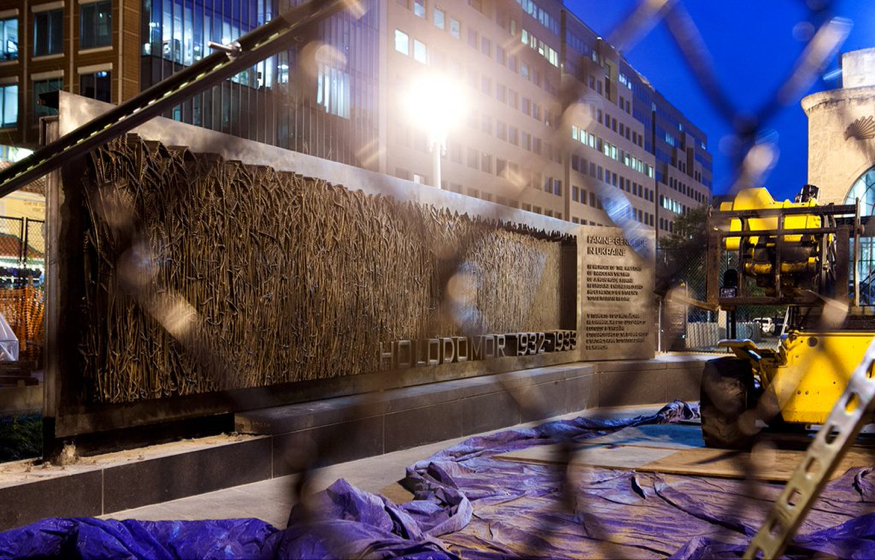A Memorial to the approximately 7 million free Ukrainians farmers and their families, starved to death by Stalin in 1932-33, in a genocide known as Holodomor, will be dedicated Nov 7 near Union Station in Washington DC.
In conjunction with this event, the Ukrainian Diaspora, including the Ukrainian World Congress, representing more than 20 million Ukrainians outside Ukraine’s borders, is working to organizing its member counties to create events in their cities and towns across the world, such as marches and candlelight vigils, in advance of the dedication.
The purpose of these actions is to once again bring to the world’s attention, how Russian rulers, from the Tsars to Putin, have been trying over the centuries to dismember Ukraine and punish Ukrainians for their ethnicity.
Holodomor took the lives of 20 percent of Ukraine’s population, mostly farm families, including some 3 million women and children. Until then, Ukraine was known as the breadbasket of Europe.
How ironic that Stalin’s Holodomor struck mostly at those parts of Eastern and Southern Ukraine now under attack by Putin and his henchmen.
Today, with Ukraine again resurging in the world, by invading Ukraine, Russian President Putin is also trying to bring Ukraine to her knees.
Ukraine’s attempted destruction by rulers of Russia, who have also enslaved the people of Russia, is steeped in history.
When in the 18th and 19th Centuries Ukraine experienced a renaissance of its language and culture, The Tsars issued edicts to make teaching Ukrainian history and even to speak in Ukrainian a crime against the Russian State. The most famous were
- The forcing into exile Ukraine’s most poet, bard and artist, Taras Shevchenko. The sentence to Kazakstan was for 10 years of to serve in a penal colony, with expressed orders not to write in Ukrainian.
- The Valuyev Circular of 1863, and
- The EMS Ukaze of 1876, both of which made it a crime to exhibit Ukrainian artifacts, or to publish or teach the Ukrainian language.
- The Holodomor of 1932-33 later led to the destruction of Ukrainian intellectuals in the late ‘30s and throughout the 1960s and 1970s.
- Not least, when it came time in 1988, to celebrate the Millennium of Kyiv-Rus Ukraine (one cannot physically move Kyiv from Ukraine and the word ‘Rus’ has nothing to do with Russia), the Russian-controlled USSR moved the festivities to Moscow, leaving Kyiv in the dark. A brochure published by the Ukrainian-American National Committee asked, Why Cannot Ukraine, the Largest Non-russian nation within the USSR, celebrate the Millennium of its own Christianity?
It is our fervent hope that the world’s press finally begins to understand that Ukraine is different from Russia and a spear in the side of all Russian rulers, who would rather Ukraine did not exist.
As long as Ukraine exists, Russia cannot claim the 1,000-plus year legacy of Kyiv, to include the Baptism of Kyiv-Rus (where the word Rus has nothing to do with Russia), which Putin has said he so desperately wants to do.








